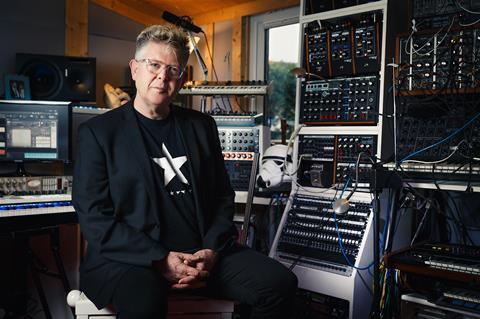Sefi Carmel, CEO of SphereTrax, on the benefits of the format

Despite first being introduced more than a decade ago, it’s only in the last couple of years that Dolby Atmos has really come to the forefront of the television production industry. It has advanced from being just a bonus deliverable to becoming a standard requirement for many major studios including Netflix, Apple and Disney. Now it is well on the way to becoming a universal requisite for the mixing process.
New shows like The Mandalorian are all mixed in Atmos, demonstrating that this format has gone far beyond the big screen. Even the world of gaming has begun to utilise immersive audio, with games like Hellblade using binaural audio to create an incredible 3D sound experience.
The workflow that post-production studios have been using for a long time is changing, and the wisest of them will look to gear up and embrace these new challenges sooner rather than later. More than likely, they will be facing pressure from producers who know how important it is to keep up with the times. Far better to be ahead of the curve than hesitate now and be forced to come back and mix your project again to comply with new requirements. More and more studios are beginning to adopt Atmos into their projects in new and exciting ways, so it seems it’s a format that’s here to stay, and producers of any content must adapt and embrace it in order to futureproof their content for the years to come.
But what exactly is Dolby Atmos anyway? And why is it becoming so popular? Well, over the years the world of audio has seen a number of new formats rise up, generally involving the addition of extra speakers/channels. Mono (one channel of audio) became stereo (two channels), which eventually became surround. Surround sound is usually delivered at either 5.1 or 7.1, and consists of 5 or 7 channels sent to speakers which ‘surround’ the listener, as well as an LFE signal which specifically handles lower frequencies.
Then there’s Dolby Atmos – the latest innovation which adds additional speakers above the listener, creating a 3D effect. The format allows for up to 128 audio tracks, which are made up of static beds, as well as movable objects, which lets you get really creative with your panning!
However, the true beauty of Dolby Atmos is its versatility. Within one file you can include all the mix-downs you need. If you listen to an Atmos file through a 5.1 setup, you will get a 5.1 mix. Listen to it through stereo speakers, get a 2-channel spatial audio mix (commonly referred to as binaural). And so on. This is all thanks to the Atmos processor, which can decode all the required information, so there is no need to render a whole host of different deliverables for different formats. And whilst you might think you would lose the 3D effect with all of these mix-downs, this isn’t necessarily the case.
If you listen to an Atmos file through headphones you get a binaural mix that can still give the illusion of sound coming from above. Similarly, there are a number of home sound systems on the market that include an upwards firing speaker, that can bounce sound off the ceiling to create the 3D Atmos experience. What this all means is that Dolby Atmos is far more accessible than you might think, and audiences can enjoy it without the need for a large, expensive speaker setup. In fact, according to Dolby, there are already more than 1.5 billion Atmos-enabled devices in the hands of viewers worldwide.
As more and more people adopt the format, composers too are thinking about how they can stay with the times. As we now know, Atmos listening devices are ubiquitous, but the studios that are able to create Atmos mixes are less so. For many composers, having a full Atmos setup is impractical, either due to the cost or the space required. As such, they must get their music mixed in Atmos externally. At the moment their options are somewhat limited, but in the future it may well be the norm for music libraries and labels to offer this service to their composers, so their products can keep up with the specs. One such platform already doing this is SphereTrax, where Atmos mixing is now a standard feature. This may be a first for the industry, but as the market evolves and moves more towards this new format, it is likely that others will follow suit.
Only time will tell if Atmos is truly here to stay, but the framework for it is certainly all in place. Given the flexibility of the format, how it is being offered and promoted by all the major streaming platforms, and the number of listening devices already in the hands of consumers, it looks like the Atmos revolution is only just beginning.

Sefi Carmel is CEO of SphereTrax, as well as a composer, sound designer, and dubbing mixer.







No comments yet